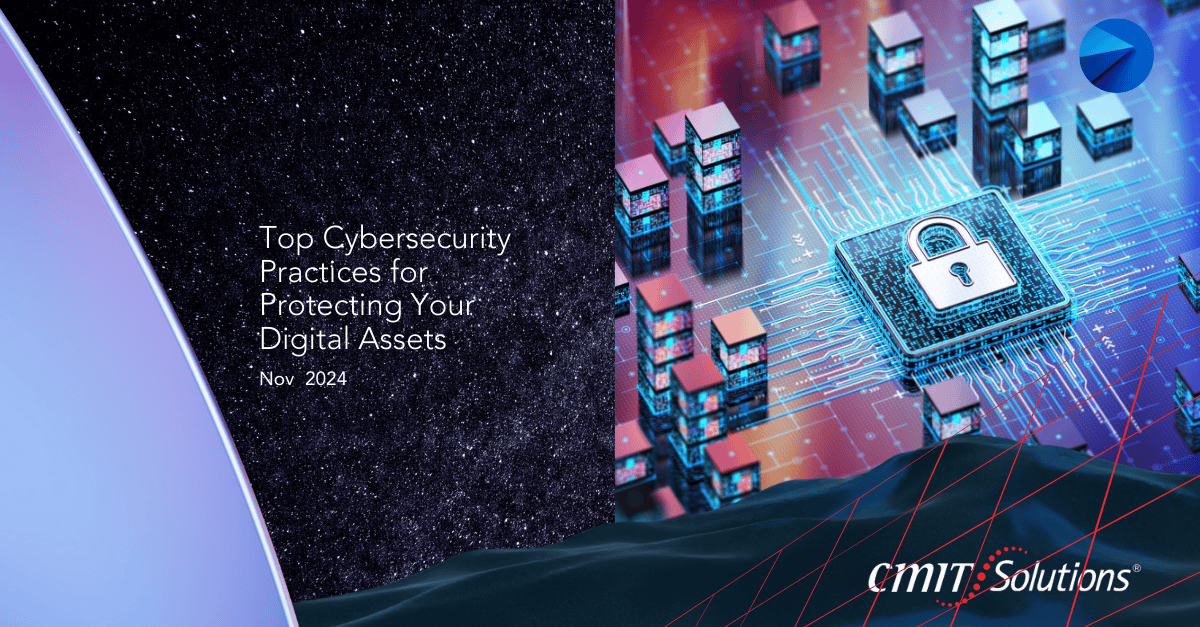In a digital-first world, cybersecurity is essential for businesses of all sizes to protect sensitive data, maintain operational stability, and build trust with clients. Threats continue to evolve, requiring proactive strategies to safeguard against data breaches, phishing scams, malware, and other cyber threats. Here’s a comprehensive look at the top cybersecurity practices for protecting your digital assets effectively.
1. Strengthen Access Control Policies
Managing access to sensitive data is a critical cybersecurity step. By limiting access based on employee roles, you minimize the risk of unauthorized data exposure. Implementing tools like role-based access control (RBAC) and multi-factor authentication (MFA) provides an added layer of security.
For more on enhancing access security, check out our guide on multi-factor authentication.
2. Utilize Network Monitoring for Proactive Threat Detection
Network monitoring enables real-time tracking of all network activity, which is vital for identifying suspicious behavior early. By using advanced monitoring tools, IT teams can spot irregular patterns that might indicate a breach attempt or internal misuse.
Learn more about how network monitoring keeps your business safe around the clock.
3. Enforce Robust Password Management Protocols
Weak or reused passwords are among the most common vulnerabilities. Encourage employees to use unique, complex passwords and implement a password manager to securely store credentials. Regularly updating passwords and avoiding browser-based solutions are also key to a strong password policy.
For more information, explore our blog on password management best practices.
4. Implement Security Awareness Training Programs
Cybersecurity isn’t just an IT concern—every employee plays a part. Regular security training sessions help your team recognize phishing attempts, social engineering tactics, and other common threats. Empowering employees with knowledge creates a first line of defense against potential cyber threats.
To see how training can improve your company’s security, visit our cybersecurity training overview.
5. Maintain a Secure Backup and Recovery System
Data backups are essential for minimizing downtime and data loss following a cyber incident. Automated, off-site backups provide peace of mind by ensuring your data is always recoverable, even in the event of a ransomware attack.
Review our tips on data backup and recovery to safeguard your critical information.
6. Utilize Firewalls as Your First Line of Defense
Firewalls create a barrier between your internal network and external threats. By blocking unauthorized access and filtering traffic, firewalls are critical to prevent potential breaches and ensure network integrity.
Discover the importance of firewalls in cybersecurity for businesses.
7. Develop a Comprehensive Incident Response Plan
No system is completely immune to cyber threats, making incident response plans essential. A clear, well-practiced response plan outlines steps to contain breaches, recover data, and restore systems to minimize disruption. Effective planning can also reduce financial and reputational damage.
Our blog on incident response strategies provides insights on preparing your business for potential security incidents.
8. Regularly Update Software and Systems
Outdated software is a prime target for cybercriminals seeking vulnerabilities. Regularly updating all software—including operating systems, security applications, and network hardware—helps close security gaps and reduces exposure to attacks.
For more on managing updates, read our guide on maintaining IT efficiency with managed services.
9. Establish Secure File-Sharing Practices
As remote work becomes more prevalent, secure file-sharing is critical to prevent unauthorized access. Implement encryption tools, virtual private networks (VPNs), and cloud-based sharing with built-in security features to protect data in transit.
Explore the best practices for secure collaboration in today’s digital workplace.
10. Implement Endpoint Security Across All Devices
Each device connected to your network represents a potential vulnerability. Endpoint security solutions offer advanced threat detection, encryption, and device management, which can secure laptops, smartphones, and other endpoints against unauthorized access.
For more on endpoint protection, check out our guide to endpoint security.
11. Invest in Managed IT Services for Holistic Security Support
Managed IT services provide businesses with ongoing security support, proactive maintenance, and expert resources. Managed services not only enhance network security but also free up in-house resources to focus on core business operations.
See the benefits of managed IT services for a streamlined approach to cybersecurity.
12. Leverage Outsourced Tech Support for Specialized Security Needs
For specialized tasks, outsourced tech support offers the expertise required to handle complex security requirements. From compliance assessments to infrastructure upgrades, outsourced support enables businesses to address specific security challenges with confidence.
Find out how outsourced tech support can strengthen your security efforts.
13. Use Cloud Security Best Practices
Cloud environments provide flexibility, but they also require robust security configurations. Follow cloud security best practices such as identity management, data encryption, and regular audits to protect your cloud-based assets.
Our blog on cloud security essentials offers a comprehensive guide for keeping data secure in the cloud.
14. Protect Against Phishing with Advanced Filters and Training
Phishing is one of the most common attack methods, and it can be highly damaging. Advanced email filters help screen out malicious messages, while training employees to recognize phishing attempts can reduce the risk of successful attacks.
Learn more about the impact of phishing scams and how to defend against them.
15. Conduct Routine Security Audits
Regular audits are essential to evaluate the effectiveness of your cybersecurity measures. Audits identify weaknesses, ensure compliance with regulations, and keep your security practices aligned with evolving threats.
Read about IT compliance and audit strategies to ensure your business remains audit-ready and secure.
Conclusion: Protecting Your Business with Proactive Cybersecurity
Cybersecurity is an ever-evolving field, and staying ahead of threats requires a proactive approach. By implementing these cybersecurity practices, you can safeguard your digital assets, minimize the risk of data breaches, and build trust with clients. From managing access to training employees, every step contributes to a comprehensive security strategy.
At CMIT Solutions of Charleston, we offer expert support in securing your digital environment and protecting your valuable data. Whether you need assistance with network monitoring, endpoint security, or managed IT services, our team is here to help. Embrace these best practices and contact us today to learn how we can help protect your business’s digital assets for the future.






